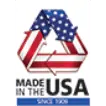By Raj Nagubadi
Manager, R&D
We’re often asked about the materials we use to manufacture Homasote fiber board, what they are and their purpose.
Cellulose fiber comprises more than 98 percent of Homasote board and is its structural component, with nearly all board strength derived from bonding of the cellulose fibers to each other.
The wax emulsion we use in the manufacturing process is a mixture of wax and water, which provides moisture resistance to the final product. In the wet-end of the process, wax from a wax emulsion is separated by alum and then deposited onto the cellulose fibers. During drying stage wax melts and uniformly gets distributed throughout the board.
Retention aid polymer helps us improve water drainage & retention of solids in the board making process. It does this mainly by chemically coagulating or flocculating the fibers and the fine particles.
Aluminum sulfate (alum) has one simple but critical function, separating wax from the wax emulsion, making wax available to deposit on the cellulose fibers.
Hydrated alumina (aluminum trihydrate), is used only in 550, N.C.F.R., as a fire retardant. When heat is applied to materials containing hydrated alumina the temperature rise is slowed down because this material absorbs heat and releases water. The water vapor dilutes and cools the combustible gases and retards their burning. It decreases the flammability and smoke emission dramatically.
Starch, used only on 460 boards, is a strength additive which increases board strength by enhancing inter-fiber bonding.







